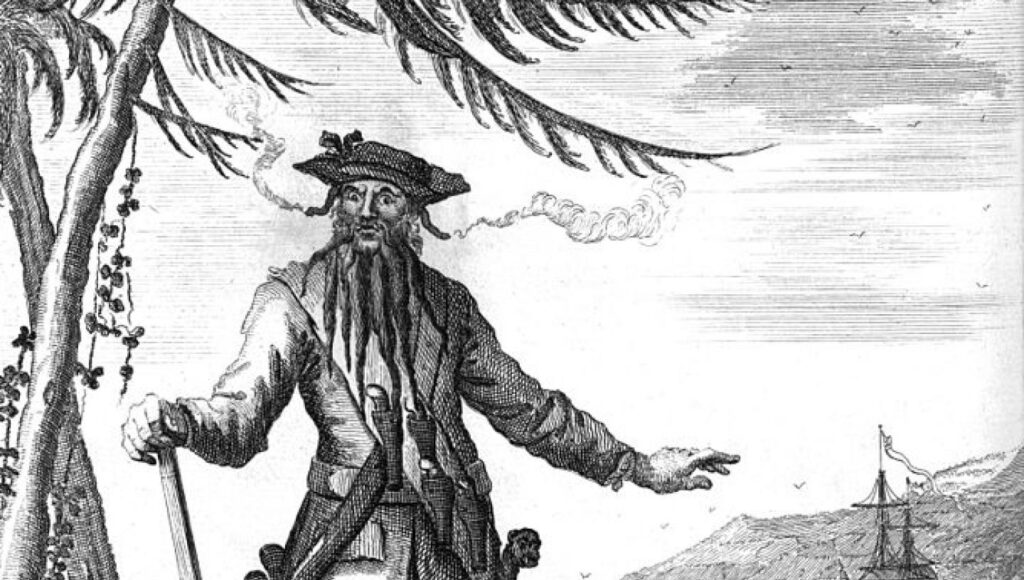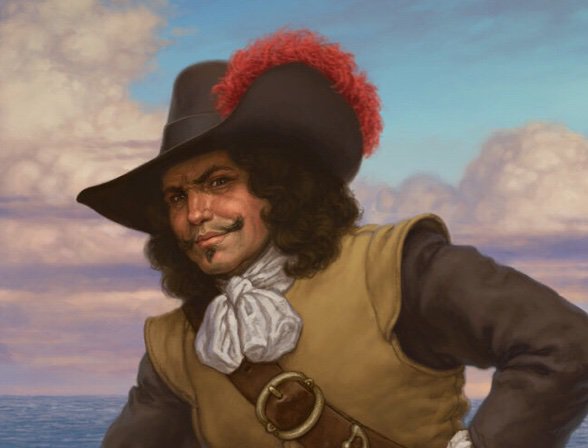
The Caribbean Sea, with its turquoise waters and emerald isles, was once a paradise. It was a world of endless summer, where the sun’s golden rays kissed the land and the sea alike. But beneath this idyllic surface, the Caribbean was a battleground, a place where nations clashed and where pirates—buccaneers, privateers, and freebooters—reigned supreme. At the heart of this tumultuous world was Jamaica, and at the heart of Jamaica, the infamous port city of Port Royal.
Port Royal was a haven for pirates, a place where the lawless found sanctuary and fortune. It was a city where the line between legitimate privateering and outright piracy was blurred, where men and women lived and died by the sword and the pistol. This is the story of those who sailed under the black flag, who dared to defy the empires of the world, and who carved their names into the annals of history.

Chapter 1: Blackbeard and the Birth of a Legend
Edward Teach, better known as Blackbeard, was a towering figure in the world of piracy. His origins were shrouded in mystery, with claims of his birth ranging from Jamaica to Bristol, England, to the Carolinas. Wherever he was born, his name struck fear into the hearts of sailors and merchants alike. His terrifying visage, with burning matches woven into his thick, black beard, became the stuff of nightmares.
Blackbeard’s career as a pirate began under the command of the fearsome Captain Benjamin Hornigold. Together, they terrorized the Caribbean, capturing ships and amassing a fortune in gold, silver, and precious cargo. But it was Blackbeard’s capture of the French slave ship "La Concorde" in 1717 that cemented his reputation. He renamed the ship "Queen Anne's Revenge" and outfitted it with 40 guns, making it one of the most formidable pirate ships of the era.

Port Royal, with its bustling docks and taverns, became Blackbeard’s home port. It was there that he forged alliances with other notorious pirates, including the flamboyant Calico Jack Rackham and the ruthless Charles Vane. The trio, along with their crews, turned the Caribbean into their playground, attacking ships and settlements with impunity.

Chapter 2: The Rise and Fall of Charles Vane
Charles Vane was a pirate’s pirate—fearless, cunning, and utterly ruthless. Born in England, Vane found his way to the Caribbean, where he quickly made a name for himself. But Vane’s downfall came not from his enemies, but from within his own ranks.
While operating in the Windward Passage between Cuba and Hispaniola, Vane attacked what he believed to be a merchant vessel. To his horror, it turned out to be a powerful French warship. After a brief exchange of cannon fire, Vane decided to flee, an act of cowardice that did not sit well with his crew. Led by his quartermaster, Jack Rackham, the crew mutinied, accusing Vane of cowardice and removing him from command.

Stranded on a small sloop with a handful of loyal followers, Vane was left to fend for himself. He quickly rebuilt his pirate fleet, but fate dealt him a cruel blow. While anchored in the Bay of Honduras, a hurricane struck, wrecking his ships and drowning most of his crew. Vane, stranded on a small island, was eventually rescued by a former buccaneer, Captain Holford, who turned him over to the authorities in Port Royal. Vane was tried, found guilty, and hanged at Gallows Point in November 1720.

Chapter 3: Calico Jack and the Hellcats
Calico Jack Rackham was known for his flamboyant style, his colorful cotton clothing earning him his nickname. But it was his association with two of the most fearsome female pirates in history, Anne Bonny and Mary Read, that truly set him apart. Together, they formed one of the most notorious pirate crews of the era.
In late October 1720, Calico Jack’s ship was anchored off Point Negril, Jamaica. The crew, celebrating their recent successes, were deep in their cups when a navy sloop, commanded by Captain Jonathan Barnett, approached. Only Anne and Mary, disguised as men, were sober enough to raise the alarm. Despite their best efforts to rouse the drunken crew, the pirates were quickly overwhelmed. Anne and Mary fought valiantly, but were ultimately captured along with Rackham and the rest of the crew.

At their trial in Port Royal, it was revealed that Anne and Mary were women, shocking the court. Both were sentenced to hang, but claimed they were pregnant, delaying their execution. Mary died in prison, but Anne’s fate remains a mystery. Some say she was rescued by her wealthy father, others that she lived out her days in obscurity, while some believe she and Mary escaped to live together in Louisiana.

Chapter 4: The Indomitable Sir Henry Morgan
Sir Henry Morgan was one of the most successful and feared privateers of his time. Born in Wales, Morgan sailed to the West Indies in search of fortune and adventure. He quickly made a name for himself as a daring and ruthless leader, capturing Spanish ships and settlements with ease. By the age of 29, he was the captain of his own ship and a wealthy man.
Morgan’s most famous exploit was his raid on Panama in 1671. Leading a force of 1,200 men, Morgan crossed the Isthmus of Panama, enduring unimaginable hardships. Despite being outnumbered and weakened by hunger and disease, Morgan and his men captured the city, looting its treasures and taking thousands of prisoners. This raid, however, occurred after a peace treaty had been signed between England and Spain, leading to Morgan’s arrest and extradition to London.

Despite his apparent betrayal, Morgan was eventually knighted by King Charles II and returned to Jamaica as its governor. He spent his remaining years as a wealthy and respected planter, but his legacy as a pirate and privateer endured long after his death.

Chapter 5: The Wicked City
Port Royal was more than just a pirate haven; it was a city of excess and debauchery. Known as the "wickedest city on Earth," it was a place where fortunes were made and lost, where the taverns and brothels never closed, and where the law was whatever the strongest man said it was. Its location made it the perfect base for pirates, with its deep harbor and proximity to major shipping lanes.

The city’s fortunes changed on June 7, 1692, when a massive earthquake struck, followed by a devastating tsunami. Much of the city sank into the sea, taking with it countless lives and untold treasures. The disaster marked the end of Port Royal’s golden age, but its legend lived on.

The pirates of Jamaica, from Blackbeard to Calico Jack, Charles Vane to Henry Morgan, left an indelible mark on history. They were outlaws and adventurers, men and women who lived by their own rules and defied the empires of their time. Their stories, filled with daring raids, brutal battles, and unimaginable treasures, continue to captivate our imaginations.
Port Royal, once the heart of their world, is now a quiet fishing village, but the echoes of its past remain. The tales of its pirates are woven into the fabric of its history, a reminder of a time when the Caribbean was a land of adventure, danger, and endless possibility.

This spot on I'm half Scottish half Cuban I've follow my family tree , this info is spot on we're carbon based beings everything been White washed to confuse us. 💯
Hey people!!!!!
Good mood and good luck to everyone!!!!!
Hey people!!!!!
Good mood and good luck to everyone!!!!!
Hey people!!!!!
Good mood and good luck to everyone!!!!!